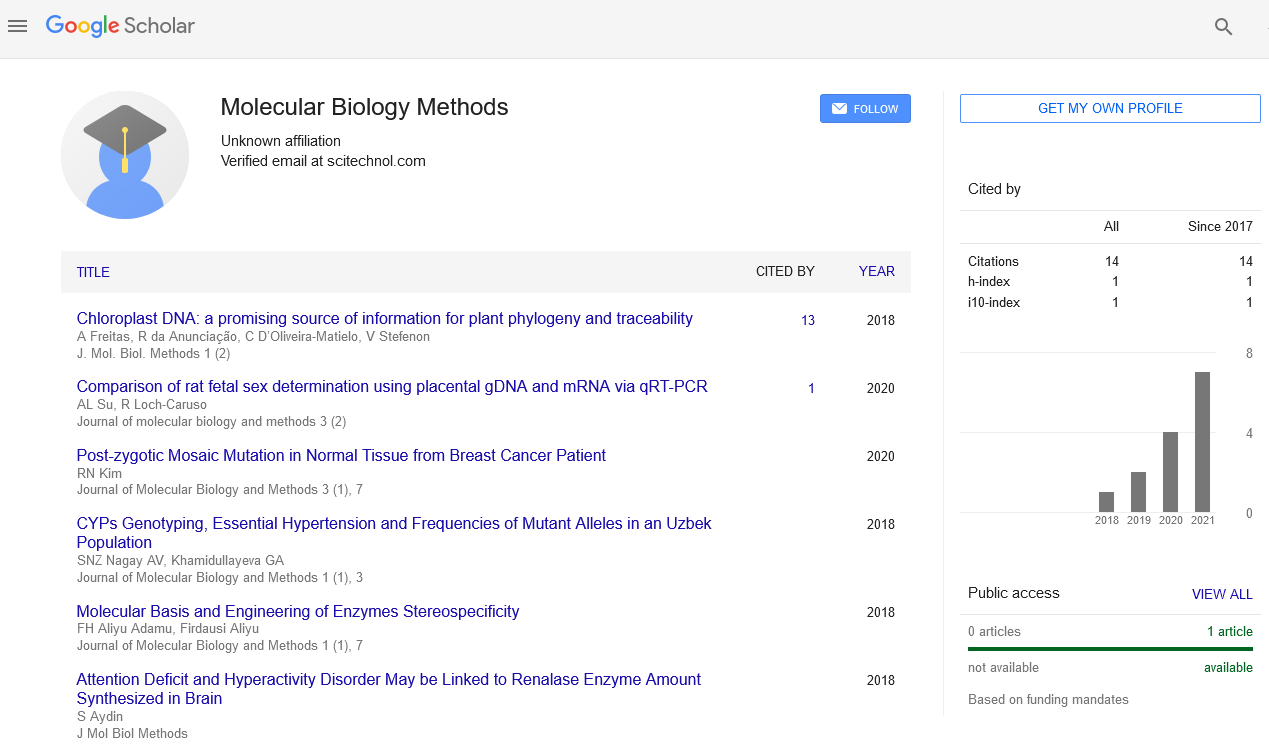Perspective, J Mol Biol Methods Vol: 7 Issue: 4
Immunochemical Techniques: Principles, Applications and Advancements
Melinda Norris*
1Department of Biological Sciences, University College London, London, United Kingdom
*Corresponding Author: Natan Bartal,
Department of Biological Sciences, University
College London, London, United Kingdom
E-mail: norrismelinda078@ac.uk
Received date: 25 November, 2024, Manuscript No. JMBM-24-154476;
Editor assigned date: 28 November, 2024, PreQC No. JMBM-24-154476 (PQ);
Reviewed date: 12 December, 2024, QC No. JMBM-24-154476;
Revised date: 19 December, 2024, Manuscript No. JMBM-24-154476 (R);
Published date: 26 December, 2024 DOI: 10.4172/JMBM.1000183
Citation: Norris M (2024) Immunochemical Techniques: Principles, Applications and Advancements. J Mol Biol Methods 7:4
Description
Immunochemical techniques are powerful tools in scientific research and diagnostics that impact the specificity of immune responses to identify and quantify molecules of interest. These techniques primarily depend on the use of antibodies, which are proteins produced by the immune system to target specific antigens. Over the years, immunochemical methods have evolved significantly, playing a vital role in a variety of fields, including medicine, biotechnology, environmental monitoring and food safety. This note explores the principles behind immunochemical techniques, their applications and recent advancements that continue to expand their utility.
The foundation of immunochemical techniques lies in the interaction between antigens and antibodies. Antigens are typically foreign molecules, such as proteins, peptides, or polysaccharides, that can trigger an immune response. The immune system produces antibodies Y-shaped proteins that bind specifically to these antigens, forming an antigen-antibody complex. The highly specific nature of these interactions is exploited in immunochemical methods to detect and quantify the presence of specific molecules, even in complex biological samples. The binding of an antibody to its antigen can be detected using a variety of labels, such as fluorescent dyes, enzymes, or radioactive isotopes, which provide a measurable signal.
One of the most well-known immunochemical techniques is Enzyme-Linked Immunosorbent Assay (ELISA). This method is widely used for detecting and quantifying substances such as hormones, antibodies and pathogens in blood, serum and other biological samples. In a typical ELISA, an antigen or antibody is immobilized on a solid surface, such as a microplate. A sample containing the corresponding antibody or antigen is added and the binding event is detected through an enzymatic reaction that produces a colour change. This colour change can be quantified using a spectrophotometer, allowing researchers to measure the concentration of the target molecule. ELISA can be performed in various formats, including direct, indirect, sandwich and competitive, each designed to address specific experimental needs.
Immunohistochemistry (IHC) is another important immunochemical technique that combines immunological methods with histological analysis. It is widely used in pathology to detect specific antigens within tissue sections. In IHC, antibodies labelled with enzymes or fluorophores are used to bind to antigens in tissue samples and the resulting antigen-antibody complexes are visualized under a microscope. This technique is essential for the diagnosis of cancer, where it helps to identify tumor markers and assess the presence of specific proteins that are indicative of disease progression. IHC can also be used to study the distribution and localization of proteins in tissues, providing insights into cellular functions and disease mechanisms.
In conclusion, immunochemical techniques have become indispensable in modern science and medicine. Their ability to detect and quantify specific molecules with high sensitivity and specificity has revolutionized diagnostics, drug development and basic research. From traditional methods like ELISA and Western blotting to advanced technologies such as point-of-care diagnostics and nanoparticle-based assays, immunochemical techniques continue to evolve. With ongoing advancements in biotechnology and nanotechnology, the potential applications of immunochemistry are bound to expand, offering even greater opportunities for understanding biological systems and improving human health.
 Spanish
Spanish  Chinese
Chinese  Russian
Russian  German
German  French
French  Japanese
Japanese  Portuguese
Portuguese  Hindi
Hindi 